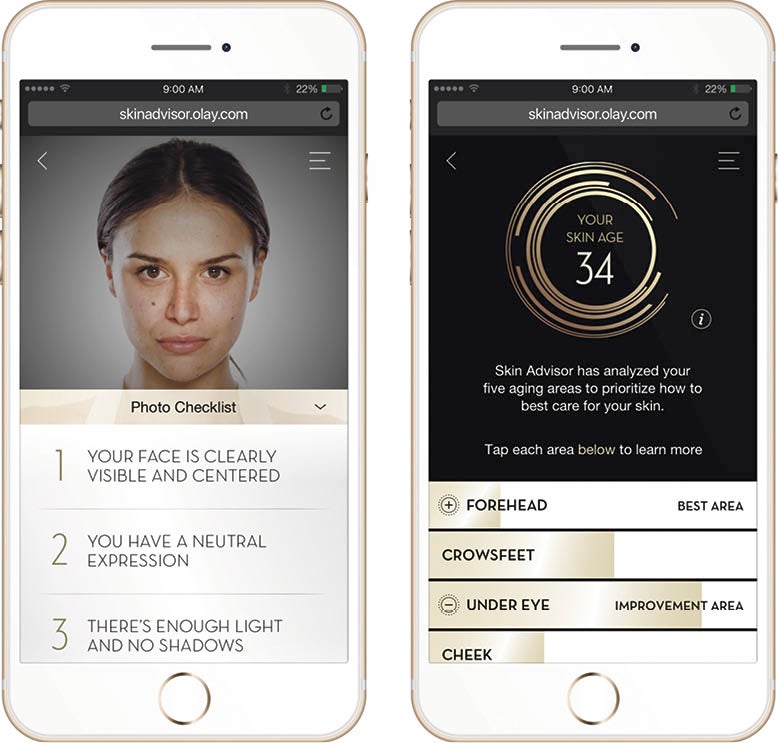It sounds absurd to think artificial intelligence could be used to generate a more human-like customer experience. But that’s exactly how it’s now being used. AI analyses huge amounts of behavioural and emotional data in a bid to communicate with us and deliver brand experiences that are more personalised and predictive.
When Unilever turns to an AI bot to boost Lipton tea sales, GlaxoSmithKline uses machine-learning to dispense flu advice through interactive ads and Dutch airline KLM trials machine-learning in its social media chatbot for flyers, you know times are a changing.
“AI is offering retailers new ways to make shopping hassle free. Modern cognitive systems can understand, reason, learn and interact in similar ways to a human being. This is a very fast-moving area,” says Tony Maile, European retail leader at IBM Cognitive Solutions.
IBM Watson, the company’s cognitive computing service, is now employed by North Face, an outdoor clothing brand, to power their virtual shopping assistant. AI helps people shop online for the right jacket, based on questions relating to where they will use it and when, say the Himalayas in December.
While US department store chain Macy’s has developed a shopping companion for smartphones, powered by machine-learning, so customers can shop and navigate the store they’re in and ask questions, such as where a brand is located or whether an item is in stock.
“AI will increasingly be used to solve problems for customers, rather than just selling products,” says Mr Maile. “Advertisers can target spend more effectively. Retailers can look at past behaviour patterns and tailor offers accordingly. We are in an era where cognitive systems can be taught by the most experienced employees and this knowledge can be made available to all staff and customers directly.”
How we got here
A few trends have driven recent changes. Firstly, there’s been an exponential rise in the amount of data relating to consumer behaviour. Secondly, there’s more affordable computational power to drive AI. Thirdly, there’s been a huge advance in core AI techniques and machine-learning algorithms.
“And on the organisational side, we’re also seeing a sea-change in how companies view the role of AI in developing customer experiences. While corporations once felt that AI conflicted with the human design of experiences, they now realise that it enhances efforts instead,” says Jonathan Epstein, international senior vice president at Sentient Technologies.
We are now in an arms race and the weapons are learning algorithms
It’s working well for subscription services such as Stitch Fix and Birchbox, which sell and curate clothes and beauty products respectively. These e-commerce stores have embedded state-of-the-art AI to act as virtual personal shoppers that work on behalf of customers who don’t have the time or inclination to shop.
In a similar vein, US beauty brand CoverGirl is serving up the world’s first influencer chatbot based on AI, called the KalaniBot, featuring American reality TV star Kalani Hilliker.
“Customers prefer KalaniBot to the real thing and she has 14 times more conversations than the average [social media] post by the star,” says Michelle Du-Prât, strategy director at Household. “KalaniBot will get smarter with use and is designed to interact in a conversational way like the real person, learning more about fans, asking them questions and then driving CoverGirl coupon downloads.”

Olay’s Skin Adviser uses deep-learning technology to help customers find the products best suited to their personal skincare needs
Personalisation
There’s no doubt that AI is enabling companies to craft tailored experiences that can accurately predict what will motivate consumers across the globe. “Technologists can anticipate the customer’s needs on a scale unimaginable a few years ago,” says Gurjeet Singh, co-founder of Ayasdi.
A great example is look-alike modelling, where companies automatically detect the characteristics of existing customers and build an online profile for a lookalike set of new prospects. Harley-Davidson has used this AI technique to boost motorcycle sales by 40 per cent.
“Using similarity metrics, we can also micro-segment customers by identifying subtle patterns in behaviour that tie them together. These segments each get an experience tailored to them, which can feel very personal,” Mr Singh explains.
This is now creating a whole new playing field when it comes to customer service because bespoke experiences are no longer the domain of high-end or well-funded retailers. If you have superior data and you can act on it with intelligence, smaller and savvy online retailers can make the grade as well.
“We are now in an arms race and the weapons are learning algorithms. These algorithms, their application, their transparency, and the actions brands and businesses take based on their recommendations will define the competitive landscape going forwards,” says Mr Singh. “AI is board-level stuff. It’s an existential threat and the businesses that fail to scale up artificial intelligence will simply go extinct.”
The next frontier for AI is focused on personalisation, where brands are looking to merchandise products based on personal taste. For instance, Procter & Gamble are using it for their skincare brand Olay, where an AI-powered platform is designed to help women better understand their skin type.
“Retailers have been talking about personalisation for years, but it’s been an aspiration. Now, however, with the ability to implement AI at scale, it’s within reach. And, paradoxically, AI can personalise experiences without needing necessarily to know any personal information at all, merely by looking at online behavioural patterns,” says Sentient Technologies’ Mr Epstein. Now there’s a thought.
How we got here

